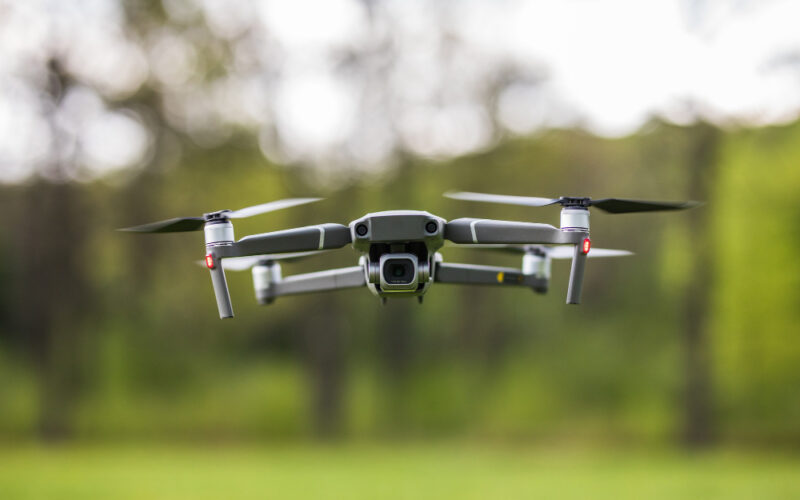What is a drone?
A drone is a flying object that is remotely controlled without humans riding on it. Its official name is “unmanned aerial vehicle” (UAV). It was developed in the 20th century for military operations, and it is still used for military purposes. However, with the improvement of flying object technology, the scope of drone use has expanded not only for military purposes but also to various fields. Typical examples of drone use include agriculture, aerial photography, product delivery, and natural disaster monitoring. In addition, as drones are commercialized, ordinary people also use drones for entertainment. While people have advantages of using drones, they are also causing social problems.
The advantages of drone use in human life:
- Safe monitoring – Drones can be used efficiently through remote control capabilities in natural environments or industrial risk factors that are difficult for humans to access. For example, drones can help people find solutions by monitoring where wildfires have occurred and grasping the situation. Drones are also being used to monitor industrial facilities that are inaccessible to humans due to high risk factors such as pipelines, flare stacks, and gas and oil refineries.
- Cost savings – People can get cost savings as the range of drone utilization expands. In other words, people can gain economic benefits from drone use by replacing workforces, devices, or vehicles which require a lot of operating costs with drones. For example, before drones were developed, people used airplanes to collect aerial photographs and various data. That was only possible at a very high cost. However, due to the development of drones, aerial photography and data collection are now possible without significant cost.
- Utilization for various purposes – Drones can be used in various ways by installing software suitable for each purpose. For example, drones used in agriculture can be used for purposes such as monitoring crop growth and spraying pesticides by installing appropriate GPS and software. These precision-functioning drones make it possible to save farmers time and money.
In addition to the benefits explained above, the various advantages of drone use make people interested in the drone industry. However, as people’s drone use increases, there are also disadvantages and many problems with drone use.
The problems caused by using drones
- The invasion of privacy – Most people would consider that one of the greatest problems with drone use is concern about the invasion of personal privacy. Of course, drones can be used efficiently to maintain safety in the environment or industry, but in such a process, they can infringe on individual freedom in the name of safety monitoring. Although the technology for drones that can collect photos and data without being noticed is a great advantage, it can also be considered a fatal disadvantage that enables privacy infringement.
- Legislative uncertainty – As the scope and frequency of drone use increase, it is urgent to enact a bill related to this. Although there are certain bills to be observed regarding the use of small drones for commercial or recreational purposes, it is true that there are still many aspects that need to be regulated by law. Laws on drone movement regulation and invasion of privacy need to be more detailed. Recognizing the allowable range of drone use by legal regulations is the most fundamental way to eradicate any possible accidents and illegal activities caused by drones.
- Safety – Safety is the first priority when using drones. Although sensors are loaded to prevent airborne collisions of drones, collision accidents have been reported repeatedly. If such an accident occurs in a densely populated area, it can lead to casualties. Even with sensors that prevent collisions, there are also crash accidents due to software malfunctions. To prevent such accidents, many drone service providers are trying to improve software applications and collision prevention sensors.
- Vulnerable security programs – Drones are vulnerable to hacking. Hackers can steal drone control rights from its real owner by hacking into drone control systems as well as drone software. In addition, hackers can also steal data collected by drones. It can lead to personal information leakage. If you want the drone to be safe from hacking, you should regularly update software distributed by drone manufacturers, and be careful not to expose devices used to control drones, such as laptops or smartphones, to malware.
Conclusion
As drone technology continues to develop, people’s use of drones is becoming more common, and the scope of use is expanding. Nevertheless, it is true that ethical and legal regulations on drone use still seem insufficient. The government should set appropriate regulations to keep people from causing social problems when using drones, and drone users should encourage healthy drone activities by complying with government-set laws and regulations.
References
Ohio University. (2018). 7 Pros & Cons of Drones and Unmanned Aerial Vehicles. [online] Available at: https://onlinemasters.ohio.edu/blog/the-pros-and-cons-of-unmanned-aerial-vehicles-uavs/ [Accessed 10 May 2022].
Unmanned aerial vehicle, Wikipedia, available at: https://en.wikipedia.org/wiki/Unmanned_aerial_vehicle. [Accessed 09 May 2022]
www.equinoxsdrones.com. (2020). 10 Major Pros & Cons of Unmanned Aerial Vehicle(UAV) Drones. [online] Available at: https://www.equinoxsdrones.com/blog/10-major-pros-cons-of-unmanned-aerial-vehicle-uav-drones [Accessed 10 May 2022].
